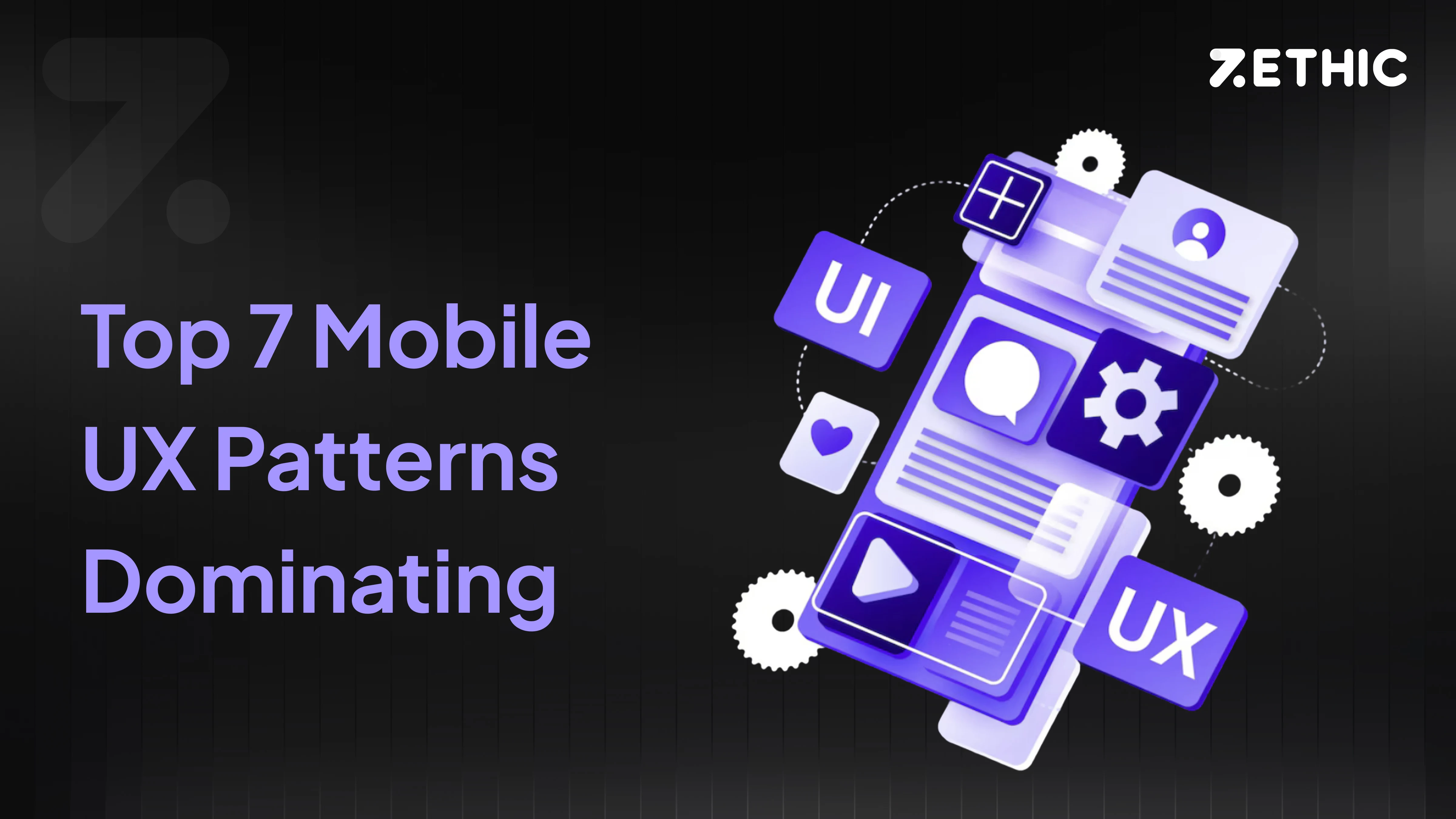Key Takeaways
- Choose a fintech design agency that builds for clarity, trust, and regulation—not just visuals.
- 69% of users abandon financial tools due to poor UX, so simplicity isn’t optional.
- Fast, mobile-optimised design directly improves user retention and credibility.
- Focus on agencies that think like product teams, not just surface-level stylists.
Design is not just what it looks like and feels like. Design is how it works. Steve Jobs said that, and fintech should’ve listened sooner. In a world where $1.5 trillion moves through digital wallets annually, most fintech apps still look like spreadsheets from the early 2000s, wrapped in neon gradients no one asked for.
And I’ll be honest, hiring a fintech design agency often feels like gambling with your product’s future. Half of them sell you buzzwords, the other half have no clue what regulation-compliant UX even means. But here’s the truth: when done right, good fintech UX design builds trust, simplifies complexity, and makes your product usable (and lovable) for real people, not just product managers. That’s why we curated this list. Not the loudest names, but the ones actually doing the work.
Top 9 Fintech Design Agencies in 2025 To Work With
According to the Baymard Institute, 69% of users abandon digital financial tools due to complex interfaces. Google’s Core Web Vitals suggest that more than 60% of fintech platforms fail to meet optimal page load and visual stability scores—especially on mobile. And when it comes to trust? A Stanford study found that 75% of users judge a company’s credibility based on its design. That’s not branding fluff—it’s conversion math.
1. Zethic
Design is the silent ambassador of your brand. – Paul Rand said it first, but Zethic proves it daily. In fintech, where trust is everything, Zethic doesn’t just design interfaces. Founded in 2017, Zethic started to craft quiet signals of credibility. Every screen, every interaction is built to reduce friction and build user confidence.
Unlike bloated design firms with layers of fluff, Zethic works lean. You get a focused team of experienced fintech designers—people who’ve built for high-stakes platforms across industries. No juniors. No guesswork. Just execution by a team that knows how to design for real-world pressure.
Their strength is clarity. Zethic strips fintech UX down to what actually matters—speed, usability, and scale. Whether it’s a new neobank, lending product, or payments platform, they design like product thinkers, not stylists.
Best for:
Fintech companies that want clarity-first design execution, without wasting time, budget, or user trust.
What they bring:
- Senior-level fintech UX expertise
- Clean, compliant onboarding & KYC flows
- Fast, mobile-optimised product interfaces
- Scalable design systems built for growth
- End-to-end collaboration with tight delivery loops
2. Clay
Clay operates with a strong visual identity and deep product sensibility. Over the years, they’ve built a reputation for delivering polished, brand-forward interfaces that still perform. Their real edge lies in creating design systems that stay consistent across complex fintech ecosystems—from web apps to mobile dashboards. Their team leans into high-fidelity design thinking, placing a strong emphasis on structure, rhythm, and tone that aligns with product goals.
Where Clay stands out is their ability to bridge brand and product seamlessly. They aren’t the fastest or scrappiest agency out there, but for fintechs looking to create a distinct design language that also supports UX logic, Clay brings maturity to the table. Their approach is more methodical, built around in-depth research and collaboration-heavy sprints, making them a strong pick for products where both form and function need to evolve in sync.
3. Work & Co
Work & Co is known for their engineering-first approach to design. They focus less on visual experiments and more on how things work at scale. Their strength lies in building product foundations that are robust, responsive, and adaptable over time. For fintechs dealing with layered data and high-volume user activity, their structured UX and well-aligned design systems become a strategic advantage.
What they bring isn’t speed—but depth. Work & Co dives into research, interaction modeling, and testing with a long-game mindset. Their work doesn’t shout—it holds up under pressure. If you’re building a product with multiple user types, long-term retention goals, or integration-heavy environments, their design approach helps keep the complexity manageable.
4. Ustwo
Ustwo is known for blending product design with behavioral thinking. They focus less on visual punch and more on designing experiences that feel intuitive, especially for first-time users navigating finance. Their design philosophy is rooted in accessibility and simplicity, often building interfaces that are WCAG-compliant by default. With the global fintech app abandonment rate hovering around 28% within the first week, Ustwo’s work reduces that drop-off through better onboarding and micro-interaction flows.
They aren’t the agency you go to for quick turnarounds or aggressive experimentation. Instead, Ustwo shines in long-term product partnerships where usability, inclusiveness, and design maturity matter. Their pace is deliberate, but their work holds up under pressure—especially in fintech products with wide user demographics or government touchpoints.
5. Bionic
Bionic takes a pragmatic approach to product design, grounded in what users actually do—not what they say in interviews. They invest heavily in rapid prototyping and iterative validation, which makes them ideal for fintech startups that are still finding product-market fit. Their process is lean, grounded in measurable outcomes, and optimized for products where conversion, engagement, or retention is the KPI.
With more than 45% of fintech apps failing to retain users beyond day 30, Bionic’s iterative loops of testing and redesign help reduce friction early. They’re not trying to impress with aesthetics—they focus on navigation logic, clarity in microcopy, and UX patterns that get users from A to B faster. For early to mid-stage fintechs that need momentum without overinvesting in visual polish, Bionic is quietly effective.
6. Fantasy
Fantasy operates at the intersection of aspiration and interaction. They’re well-known in design circles for their futuristic visuals, but in fintech, they offer more than eye candy. Their strength lies in rethinking user flows from a zero-based perspective—ideal for products trying to escape legacy banking UX and deliver something radically simple.
They’re not the best fit for companies needing tight shipping cycles or conservative workflows. But if you’re building something new—like a next-gen wealth app, a crypto-native banking tool, or AI-driven financial advisor—Fantasy brings clarity to vision-heavy products. In a market where user patience drops after 2.5 seconds of load time (Google, 2025), they design experiences that don’t just look clean—they feel fast and emotionally intuitive.
7. MetaLab
MetaLab brings a product builder’s mindset to fintech UX. Their real value lies in early-stage product strategy—helping fintech founders make smart design bets before writing a line of code. They prioritize clarity, narrative flow, and usability—especially in complex flows like payments, investments, or lending. MetaLab’s work isn’t flashy, but it’s grounded in behavioural clarity and interaction simplicity.
They work best when brought in early, especially when defining a product’s first or second iteration. Their designers think like PMs—making decisions based on what users need, what drives activation, and what slows people down. With fintech customer acquisition costs rising 28% YoY, MetaLab’s frictionless onboarding flows and trust-first UX can directly improve unit economics.
8. Beyond
Beyond leans into full-stack thinking—bridging product strategy, UX, and development. Their work is structured, methodical, and highly user-centered. They’re not the agency that rushes into Figma; they start with user journeys, edge-case mapping, and workflow alignment. This approach is especially useful in B2B fintech platforms or back-office tools where UX is more about function than beauty.
They focus on creating experiences that help teams work better—whether it’s internal dashboards, approval systems, or role-based interfaces. With enterprise fintech adoption growing at 17% YoY (PwC, 2025), Beyond builds tools that scale without collapsing under complexity. They’re not loud, but they’re reliable—and their work reflects deep attention to user operations.
9. Code & Theory
Code & Theory takes a strategic, research-led approach to fintech design. Their work often begins far before the wireframe—rooted in user behavior, digital accessibility, and business context. They specialize in unifying complex backend systems with consumer-facing interfaces, especially useful in enterprise-grade fintech platforms. Their strength lies in aligning multi-channel product experiences, not just visually, but functionally.
With over a decade of experience, they’ve built interfaces that handle dense data, multi-user roles, and real-time transactions. Their process is slow and deliberate, but it shows in how they handle friction points like loan applications, document uploads, or decision-based dashboards.
The Takeaway Moment
The agencies listed here bring different strengths. Some lead with visual polish, others with structure. But if you’re building a product where trust, speed, and clarity matter more than decoration—Zethic is quietly setting the standard. Not loud. Just effective. And in fintech, that’s usually what works.
Most fintech founders overestimate what design can do in the first month, and underestimate what it can fix over a product’s lifetime. Choosing a design agency isn’t about picking the one with the flashiest site or biggest portfolio. It’s about picking the one that thinks clearly under pressure and builds with real users in mind.
Deadlines slip when design and code do not speak the same language. Zethic hands over files that devs can ship as is. Book call with the experts and stay on schedule.



